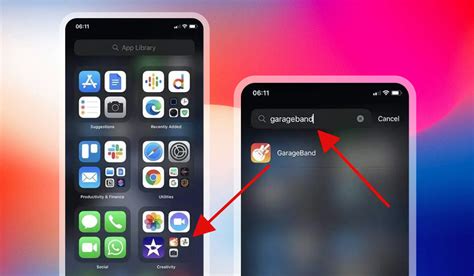
AT&T is facing a significant data breach impacting approximately 86 million current and former customers, with roughly 44 million Social Security numbers and 7.6 million account passcodes compromised, according to the company. The data, which appears to be from 2019 and earlier, recently surfaced on a hacking forum, prompting an internal investigation and ongoing customer notifications.
The telecommunications giant confirmed the breach after initially downplaying it, stating on Saturday, March 30th, that they are “assessing the impact” and “taking steps to protect” those affected. This confirmation followed an initial denial earlier in the month when the data first appeared online, with AT&T claiming there was no evidence of a system breach. “Our preliminary analysis shows that the data set appears to be from 2019 and earlier,” the company said in its latest statement.
The leaked data includes a wide array of sensitive personal information, raising concerns about identity theft, phishing scams, and other malicious activities. Beyond Social Security numbers and passcodes, names, email addresses, mailing addresses, phone numbers, and dates of birth are also believed to be included in the compromised data set. This breadth of information makes affected individuals particularly vulnerable to sophisticated social engineering attacks, where criminals use personal details to impersonate legitimate entities and gain access to accounts or extract further information.
AT&T is currently in the process of notifying affected customers and offering resources to help them protect themselves. These resources include complimentary identity theft monitoring and fraud alerts. The company is also urging customers to be vigilant, change their account passcodes, and monitor their financial accounts for any suspicious activity.
The breach’s emergence has drawn scrutiny from cybersecurity experts and privacy advocates, who are questioning AT&T’s data security practices and the timeline of its response. The delayed confirmation and initial denial have fueled concerns about transparency and the company’s commitment to protecting customer data. The incident also raises broader questions about the responsibilities of large corporations in safeguarding sensitive personal information in an era of increasingly sophisticated cyber threats.
The scale of the breach places it among the largest data security incidents in recent history, highlighting the persistent challenges organizations face in protecting valuable data assets. It serves as a stark reminder of the potential consequences of data breaches and the importance of robust cybersecurity measures, proactive monitoring, and transparent communication with affected individuals.
Background and Timeline
The AT&T data breach first came to light earlier in March when a dataset claiming to contain sensitive customer information was posted on a known hacking forum. Initially, AT&T denied any evidence of a breach, stating that its systems had not been compromised. However, cybersecurity researchers began analyzing the data and quickly confirmed that it contained legitimate customer information, including Social Security numbers and passcodes.
As evidence mounted, AT&T initiated an internal investigation to determine the source and scope of the leak. On March 30th, the company issued a revised statement acknowledging the breach and confirming that the data appeared to originate from 2019 or earlier. “We are assessing the impact and taking steps to protect our customers,” AT&T stated.
The delay in confirming the breach has drawn criticism from security experts and privacy advocates. Some have questioned why it took AT&T so long to acknowledge the incident, particularly given the sensitive nature of the compromised data. Others have raised concerns about the company’s initial denial, arguing that it may have delayed customers from taking steps to protect themselves.
The exact source of the breach remains under investigation. AT&T has not yet determined whether the data was stolen directly from its systems or obtained through a third-party vendor. The company is working with law enforcement and cybersecurity experts to investigate the incident and identify the perpetrators.
Impact on Customers
The data breach has the potential to have a significant impact on affected AT&T customers. The compromised data, including Social Security numbers, passcodes, names, addresses, and dates of birth, can be used for a variety of malicious purposes, including:
-
Identity Theft: Criminals can use stolen Social Security numbers and other personal information to open fraudulent accounts, file false tax returns, and commit other forms of identity theft.
-
Phishing Scams: Attackers can use leaked email addresses and phone numbers to target customers with phishing scams, attempting to trick them into providing additional sensitive information or clicking on malicious links.
-
Account Takeover: Stolen passcodes can be used to gain unauthorized access to AT&T accounts, allowing criminals to make fraudulent charges, change account settings, or even steal services.
-
Credit Card Fraud: While the article does not mention credit card information, in some data breaches related information is used to cross-reference to create credit card fraud.
AT&T is offering complimentary identity theft monitoring and fraud alerts to affected customers to help them mitigate these risks. The company is also urging customers to be vigilant, change their account passcodes, and monitor their financial accounts for any suspicious activity.
AT&T’s Response
In response to the data breach, AT&T has taken the following steps:
-
Internal Investigation: The company has launched an internal investigation to determine the source and scope of the leak.
-
Customer Notifications: AT&T is notifying affected customers and providing them with information about the breach and steps they can take to protect themselves.
-
Security Enhancements: AT&T is implementing additional security measures to protect customer data and prevent future breaches.
-
Collaboration with Law Enforcement: The company is working with law enforcement to investigate the incident and identify the perpetrators.
AT&T has emphasized its commitment to protecting customer data and has pledged to take all necessary steps to mitigate the impact of the breach. However, the incident has raised serious questions about the company’s data security practices and its ability to safeguard sensitive personal information.
Expert Analysis and Commentary
Cybersecurity experts have expressed concern about the scale and sensitivity of the AT&T data breach. They have also criticized the company’s initial denial and the delay in confirming the incident.
“This is a significant breach that could have serious consequences for affected customers,” said a leading cybersecurity consultant. “The compromised data includes highly sensitive information that can be used for identity theft, phishing scams, and other malicious activities.”
Privacy advocates have also raised concerns about the breach. They have called on AT&T to provide more information about the incident and to take steps to improve its data security practices.
“This breach is a reminder of the importance of protecting personal data,” said a privacy advocate. “Companies that collect and store sensitive information have a responsibility to safeguard that data and to be transparent about any breaches.”
The incident also underscores the need for stronger data protection laws and regulations. Privacy advocates have called on lawmakers to enact stricter rules governing the collection, storage, and use of personal data.
Broader Implications
The AT&T data breach has broader implications for the telecommunications industry and for businesses that collect and store sensitive personal information. It serves as a reminder of the persistent threat of cyberattacks and the importance of robust cybersecurity measures.
The incident also highlights the need for greater transparency and accountability in the event of a data breach. Companies must be forthcoming with information about breaches and must take steps to mitigate the impact on affected customers.
Furthermore, the breach underscores the importance of data minimization. Companies should only collect and store the data they need and should delete data when it is no longer necessary.
The AT&T data breach is a wake-up call for businesses and individuals alike. It is a reminder of the importance of protecting personal data and of taking steps to mitigate the risk of cyberattacks.
The Importance of Strong Passwords and Multi-Factor Authentication
A crucial takeaway from the AT&T data breach is the significance of strong, unique passwords and the implementation of multi-factor authentication (MFA). While the leaked data included passcodes, having a robust password policy and utilizing MFA can significantly reduce the risk of account compromise even if data is exposed.
Strong passwords should be at least 12 characters long and include a combination of uppercase and lowercase letters, numbers, and symbols. Avoid using easily guessable information like birthdays, names, or common words. It’s also essential to use a different password for each online account to prevent a single breach from compromising multiple accounts.
Multi-factor authentication adds an extra layer of security by requiring users to provide two or more verification factors to access their accounts. These factors can include something you know (password), something you have (a code sent to your phone), or something you are (biometric authentication). Even if a password is compromised, MFA can prevent unauthorized access to an account.
AT&T, like many other companies, offers MFA as an option for its customers. It is highly recommended that all AT&T customers, as well as users of other online services, enable MFA to protect their accounts from unauthorized access.
The Role of Data Encryption
Data encryption is another critical security measure that can help protect sensitive information from unauthorized access. Encryption involves converting data into an unreadable format, which can only be decrypted with a specific key. This makes it difficult for attackers to access and use stolen data, even if they manage to breach a system.
There are two main types of encryption: encryption in transit and encryption at rest. Encryption in transit protects data as it is being transmitted between systems or devices. This is typically done using protocols like HTTPS, which encrypts data as it is sent over the internet. Encryption at rest protects data that is stored on a device or server. This can be done using disk encryption, database encryption, or file encryption.
While it is unclear what level of encryption AT&T used to protect the compromised data, the incident underscores the importance of using strong encryption to protect sensitive information both in transit and at rest.
Legal and Regulatory Ramifications
The AT&T data breach is likely to have legal and regulatory ramifications for the company. Depending on the specific circumstances of the breach and the laws of the jurisdictions where affected customers reside, AT&T could face lawsuits, fines, and other penalties.
Several laws and regulations may be relevant to the AT&T data breach, including:
-
The California Consumer Privacy Act (CCPA): The CCPA gives California consumers the right to know what personal information businesses collect about them, the right to delete their personal information, and the right to opt out of the sale of their personal information.
-
The General Data Protection Regulation (GDPR): The GDPR is a European Union law that protects the personal data of EU residents. It applies to any organization that processes the personal data of EU residents, regardless of where the organization is located.
-
State Data Breach Notification Laws: Many states have laws that require businesses to notify customers when their personal information has been compromised in a data breach.
AT&T could face lawsuits from affected customers alleging negligence, breach of contract, and violation of privacy laws. The company could also face fines from regulatory agencies for violating data protection laws. The Federal Communications Commission (FCC) could also levy fines and penalties depending on the outcome of their investigation.
The legal and regulatory consequences of the AT&T data breach could be significant, potentially costing the company millions or even billions of dollars.
Future Prevention Strategies
To prevent future data breaches, AT&T and other organizations must implement a comprehensive cybersecurity strategy that includes the following elements:
-
Risk Assessments: Regularly assess cybersecurity risks and vulnerabilities to identify potential weaknesses in systems and processes.
-
Security Awareness Training: Provide regular security awareness training to employees to educate them about phishing scams, social engineering attacks, and other cyber threats.
-
Strong Passwords and Multi-Factor Authentication: Enforce strong password policies and implement multi-factor authentication for all critical systems and accounts.
-
Data Encryption: Encrypt sensitive data both in transit and at rest to protect it from unauthorized access.
-
Intrusion Detection and Prevention Systems: Implement intrusion detection and prevention systems to monitor network traffic and detect and block suspicious activity.
-
Regular Security Audits: Conduct regular security audits to identify and address any vulnerabilities in systems and processes.
-
Incident Response Plan: Develop and maintain an incident response plan to guide the organization’s response to a data breach.
-
Vendor Risk Management: Assess the security practices of third-party vendors and ensure that they have adequate security measures in place to protect sensitive data.
By implementing these strategies, organizations can significantly reduce their risk of data breaches and protect the sensitive information of their customers and employees.
The AT&T data breach serves as a stark reminder of the ever-present threat of cyberattacks and the importance of proactive cybersecurity measures. It underscores the need for organizations to prioritize data security and to take all necessary steps to protect sensitive information from unauthorized access. The incident also highlights the importance of transparency and accountability in the event of a data breach, as well as the need for stronger data protection laws and regulations.
FAQ: AT&T Data Breach
1. What happened in the AT&T data breach?
Approximately 86 million current and former AT&T customers had their data exposed in a breach. This included approximately 44 million Social Security numbers and 7.6 million account passcodes. Other compromised information includes names, email addresses, mailing addresses, phone numbers, and dates of birth.
2. When did the data breach occur and when was it discovered?
AT&T believes the data originated from 2019 or earlier. The breach surfaced in early March on a hacking forum, but AT&T initially denied any system compromise. The company confirmed the breach on March 30th after further investigation.
3. What should I do if I think I am affected by the AT&T data breach?
AT&T is notifying affected customers. Regardless, it’s recommended that all current and former AT&T customers take the following steps:
- Change your AT&T account passcode immediately.
- Monitor your credit reports and financial accounts for any suspicious activity.
- Be wary of phishing emails, text messages, or phone calls asking for personal information.
- Consider placing a fraud alert or credit freeze on your credit reports.
- Enroll in the complimentary identity theft monitoring offered by AT&T (if eligible).
4. What is AT&T doing to protect affected customers?
AT&T is notifying affected customers and offering complimentary identity theft monitoring and fraud alerts. They are also urging customers to change their account passcodes and monitor their financial accounts. The company is conducting an internal investigation and working with law enforcement to investigate the incident.
5. What are the potential risks of having my information exposed in this data breach?
The potential risks include:
- Identity Theft: Criminals can use your Social Security number and other personal information to open fraudulent accounts, file false tax returns, and commit other forms of identity theft.
- Phishing Scams: Attackers can use your email address and phone number to target you with phishing scams.
- Account Takeover: Your account passcode can be used to gain unauthorized access to your AT&T account or other online accounts.
- Financial Fraud: Stolen personal information can be used to commit credit card fraud or other financial crimes.









